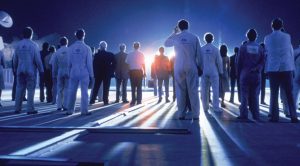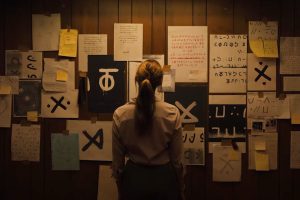
Ray Harryhausen: A Name Synonymous with His Craft
Hard as it may be to believe, there was a time when CGI didn’t exist. Sure, there were special effects and big stompy monsters but filmmakers had to use far more ingenious techniques to get the products of their imagination up on the screen. While the Japanese favoured “suitmation” (a man in a rubber suit walking over a miniature set) to simulate Godzilla’s destruction of Tokyo and the Japanese military, western movies tended to use model work and stop-motion techniques for their own brand of saucer-based city-slashing and overgrown beastie-bashings. While stop-motion is used to this day by the likes of Aardman Studios, it was between the fifties and eighties that the technique experienced a golden age dominated by the industry’s go-to man for intricate fantasy action scenes: Ray Harryhausen.
If you’re of a certain age then the mere mention of Ray Harryhausen is enough to provide a warm glow of nostalgia and an urge to make your kids watch Jason and the Argonauts (1963). Of course, the real twentieth century pioneer of the stop-motion technique was Willis O’Brian, but it was his work that did much to inspire the young Harryhausen with whom he later worked on Mighty Joe Young (1949). Harryhausen had an apparently natural talent for bringing his clay models to life; it’s one thing to create the illusion of a moving dinosaur but another entirely to give it character. While many will point out the technical achievement of the six-armed Kali sword fighting in The Golden Voyage of Sinbad (1974) or cowboys lassoing a dinosaur in The Valley of Gwangi (1969), Harryhausen’s real genius was to turn his creations into genuine dramatis personae. The moment Hylas and Hercules look up at the towering statue of Talos in Jason and the Argonauts, just as it slightly turns its head to the sound of huge metallic grinding, should be regarded as one of the greatest moments of cinema. The Beast from 20,000 Fathoms (1953) attempt at intimacy with a lighthouse is still one of sci-fi’s great pieces of drama made all the more perfect by the remains of the metallic spiral staircase left bent but still protruding from the rubble; it was exquisite attention to detail. It wasn’t just the modelling; it was the context in which it was used.
Harryhausen retired after Clash of the Titans (1981) but no one ever really took his place. As sci-fi became more concerned with spaceships and superheroes, stop-motion became a little old hat even long before the advent of CGI. It has become a technique from a bygone age, more suited to the whimsical British comedy of Aardman. As a result Ray Harryhausen will always be the name synonymous with his chosen art.
Harryhausen passed away on Tuesday just short of a year after the death of his great friend, author Ray Bradbury. An unforgettable era has finally come to an end.







No comment yet, add your voice below!